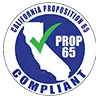Traffic signs are crucial for directing the safe flow of traffic and alerting drivers of important information. As communities seek more sustainable infrastructure solutions, many are transitioning traditional traffic signs to solar LED models. Read on to learn what makes solar LED traffic signs a smart choice for cities looking to reduce environmental impact and improve roadway communication.
What are Solar LED Traffic Signs?
Solar LED traffic signs are illuminated traffic signs powered by solar energy instead of utilities or batteries. They utilize high brightness LEDs as the light source and solar photovoltaic panels to harvest sunlight for power.
Some key features include:
Photovoltaic solar panels mounted on the sign to collect solar energy from the sun.
LEDs designed for visibility even in bright daylight that require minimal electricity.
Solar controllers that store and distribute solar electricity to power the LEDs.
Rechargeable batteries that store solar energy to power the sign’s operation at night.
Durable casing to protect the solar components from outdoor elements.
Adjustable LED brightness settings for day or nighttime visibility.
Wireless connectivity for remote monitoring and programming.
Solar LED technology makes traffic signs eco-friendly and cost-effective to run over the long term.
Benefits of Using Solar LED Signs
There are many compelling benefits that make solar LED signs a smart choice for modernizing traffic communication:
Renewable Energy
Solar LED traffic signs utilize free, clean power from the sun rather than relying on electric utility grids. Just one sign can offset over 1 ton of carbon annually. This makes them a sustainable solution to reduce environmental impact. The renewable solar energy ensures reliable, emission-free operation without interruption.
Energy Independence
By generating their own electricity from the sun rather than pulling from the grid, solar LED signs free municipalities from utility costs. This reduces electric bills and provides energy independence. Solar signs are immune to power outages that can render grid-dependent signs inactive.
Cost Savings
Though initial costs are higher, solar LED signs pay for themselves in just a few years through electricity bill savings. Minimal maintenance needs, no consumables like bulbs to replace, and 30+ year lifespans also provide long-term cost savings. The free solar power enables budget-friendly operation for decades.
Lightweight Design
Solar LED signs utilize lightweight yet durable aluminum framing, polycarbonate lenses, and integrated solar modules for reduced weight compared to older sign materials. This simplifies installation and reduces load on support structures.
Customizable Messaging
LEDs allow programmable, real-time message updating via wireless networks. Operators can easily update solar LED signs remotely with important messages like Amber alerts, traffic advisories, and emergency notifications.
Enhanced Visibility
LEDs offer superior illumination compared to incandescent lights on traditional signs. Solar LED signs also maintain consistent brightness output over time. This ensures excellent legibility of sign messages around the clock.
With all of these advantages, municipalities across the country are choosing to “go solar” with their traffic signage needs.
Primary Types of Solar LED Traffic Signs
Solar LED technology can power many different types of important traffic signs. Here are some of the most common applications:
Solar LED Stop Signs
Stop signs regulate right-of-way at intersections to prevent collisions. Solar LED models maintain stop sign visibility and reflectivity 24/7 through bright LED illumination. Added safety at rural intersections and increased liability protection make solar LED upgrades a smart choice.
Solar LED Warning Signs
Roadway warning signs like curve ahead, hill blocks view, and pedestrian crossing caution drivers of upcoming hazards. Solar LED models enhance conspicuity of these vital warning messages.
Solar LED Guide Signs
Guide signs direct motorists along routes and provide destination information. Solar LED enhances the visibility of lane assignments, distance, city limits, and other helpful signage to improve navigation.
Solar LED Speed Limit Signs
Solar LED technology illuminates speed limit signs for improved visibility. This prompts drivers to check their speed, promoting safer adherence to speed limits.
Solar LED School Zone Signs
School zone safety signs remind drivers that reduced speed school zone limits are in effect during arrival and dismissal times. Solar LED school signs increase compliance through brighter speed postings.
Solar LED Street Name Signs
Solar LED street name signs aid navigation and wayfinding. Their bright illumination augments reflectivity to help identify intersections from a distance.
Solar LED Parking Signs
Parking regulation signs for handicap spots, time limits and other parking rules are illuminated by solar LEDs to maintain consistent visibility around the clock.
Clearly, solar LED is a versatile technology capable of sustainably powering many different types of traffic control signs.
Solar LED Traffic Sign Components
Solar LED traffic signs may seem complicated, but they simply combine a few key components:
Enclosure The sign face, frame, and back enclosure house and protect the solar components from weather, impact, and vandalism. Aluminum and polycarbonate materials resist corrosion and provide durability.
LED Display Hundreds of bright LEDs form the illuminated sign text or graphics. LEDs offer excellent visibility, dimmability, and energy efficiency.
Solar Panels Photovoltaic solar panels mounted on the sign harvest sunlight and convert it into usable electricity to power the LEDs.
Battery Bank Rechargeable lithium-ion batteries store solar energy and power the sign overnight when solar harvesting is unavailable.
Solar Controller The solar controller regulates distribution of solar power from the panels to charge the batteries and LEDs at the optimal currents.
Antenna A wireless antenna enables remote programming and monitoring of solar LED sign functions via networks like cellular or WiFi.
These components work together to capture, store, and deliver solar energy on demand for sustainable LED sign illumination.
Solar LED Traffic Sign Visibility Performance
For traffic signs to fulfill their important function, excellent visibility and legibility are essential. Solar LED signs were designed specifically with visibility in mind.
Factors that maximize solar LED sign visibility include:
Intense LED brightness LEDs produce highly visible light. Sign luminance meets or exceeds federal standards.
Wide viewing angle Signs maintain visibility from sharp viewing angles for clarity at a distance.
Optimal LED placement Strategic LED placement enhances the contrast between text and background.
Durable polycarbonate lens The protective cover provides abrasion resistance while allowing optimal light transmittance.
Dimmable illumination Programmable dimming modes adjusting LED intensity for day or night optimize visibility.
Ambient light sensors Light sensors automatically calibrate LED intensity based on ambient conditions.
Reflective vinyls Retroreflective vinyls bounce headlights back to drivers for added reflectivity.
Together, these design elements optimize solar LED traffic sign visibility and legibility in all conditions.
Getting the Most from Your Solar LED Traffic Signs
To leverage your solar LED signs effectively, follow these guidelines:
Strategically place signs to receive optimal sunlight and visibility. Avoid shade from buildings, foliage, or other signs.
Keep the sign face clear of dust, dirt, and debris through occasional cleaning to allow light transmittance.
Check for sign damage like cracked enclosures or lenses which allow moisture and grime accumulation.
In snowy climates, promptly clear accumulated snow off the solar panels to avoid power loss.
Use software settings to program LEDs for maximum day and night visibility. Enable automatic dimming.
Add supplemental batteries to high power consumption signs like those with multiple displays or frequent wireless messaging needs.
Consider trimming back vegetation growth over time to maintain solar exposure as shadows increase.
Taking steps to maximize sunlight exposure and minimize obscuration will keep your solar LED signs performing optimally.
Case Study: Riverside, CA Upgrades to Solar LED
The City of Riverside, California recently undertook a solar LED upgrade of over 1500 of its traffic signs. The project delivered impressive results:
Over 50% reduced energy consumption compared to previous grid-powered signs
Nearly 900,000 kWh in electricity savings annually
Estimated $3 million in total lifetime cost savings
Over 1.6 million pounds of greenhouse gas emission reduction per year
Increased visibility and reflectance of signage
Ability to remotely manage sign messaging in real time
Through the solar LED upgrade, Riverside improved roadway efficiency, safety, sustainability and disaster resilience while realizing substantial cost savings. The project underscores the benefits cities can gain from transitioning to solar LED traffic signs.
Solar LED Traffic Signs A Smart Investment
While the upfront cost of solar LED signs exceeds traditional signs, the energy savings and sustainability gains make the investment well worth it. As solar LED technology continues to advance and become more affordable, we can expect it to become the new norm.
Solar LED signs represent a win-win opportunity to reap both environmental and economic benefits. They provide clean illumination while reducing lifetime costs and maintenance demands compared to conventional signs. Contact us at www.yooshing.com to learn more about how our durable, highly visible solar LED traffic signs can improve your community’s infrastructure while helping build a greener future.














